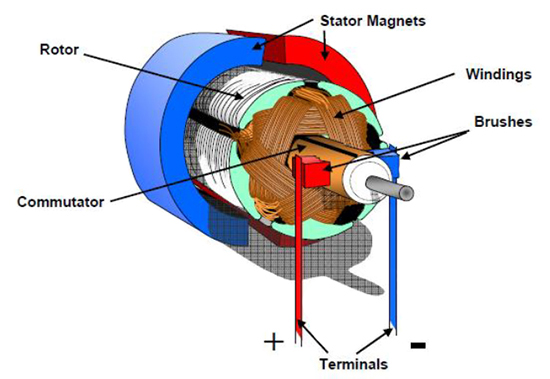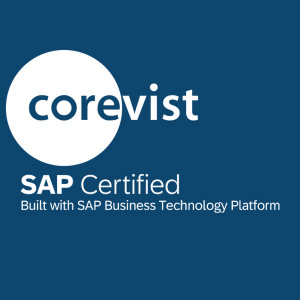
On this planet of automation and robotics, DC servo motors stand because the unsung heroes, enabling exact and environment friendly motion in a variety of purposes. When you’re concerned in fields like manufacturing, robotics, and even DIY initiatives, you’ve doubtless come throughout these motors or thought of utilizing them.
However you is likely to be scratching your head, questioning how they work, what makes them totally different from different motors, and tips on how to benefit from them. This complete information is right here to reply all of your questions and extra.

DC servo motors are a specialised breed of electrical motors. Not like common DC motors, which generally run at a pace proportional to the utilized voltage and have restricted management over their place, DC servo motors are designed for exact management of place, velocity, and torque.
Stepper motors, then again, transfer in discrete steps. DC servo motors supply easy, steady motion and may maintain a particular place precisely. For example, in a robotic arm used for delicate meeting duties, a DC servo motor can place the end-effector with excessive precision, one thing a daily DC motor can’t obtain as successfully.
Their closed-loop management system, a key differentiator, permits them to continuously monitor and alter their efficiency primarily based on suggestions.

A DC servo motor system consists of a number of essential parts. At its core is the DC servo motor itself, typically a permanent-magnet DC motor. This motor offers the mechanical energy for motion. Connected to the motor shaft is an encoder, an important sensor.
The encoder, as we’ll talk about extra within the encoder part, is accountable for offering suggestions on the motor’s place and velocity. The servo drive, also referred to as the servo amplifier or controller, is one other important half. It processes the enter instructions from an exterior supply, like a microcontroller, and the suggestions from the encoder.
Primarily based on this info, the servo drive generates the suitable voltage and present to drive the motor. An influence provide is required to supply electrical vitality to the system. Moreover, mechanical parts similar to gears could also be used to regulate the torque and pace output to match the necessities of the load.
DC servo motors are the spine of recent automation. In industries similar to semiconductor manufacturing, the place parts have to be positioned with sub-micron precision, DC servo motors guarantee constant and correct outcomes.
Actually, based on a report by Semiconductor Gear and Supplies Worldwide, over 90% of semiconductor manufacturing gear makes use of servo motors for exact positioning.
Within the automotive trade, they’re utilized in robotic meeting traces, bettering productiveness and high quality. Their capability to supply exact torque management and fast acceleration makes them preferrred for purposes like robotic arms in manufacturing, the place fast and correct actions are required.
The closed-loop management system of DC servo motors additionally permits for real-time error correction, adapting to modifications in load or environmental situations, which is essential for sustaining the effectivity of automated processes.

What’s an encoder and the way does it work?
An encoder is a sensor that performs a pivotal position within the operation of a DC servo motor system. It converts the mechanical movement of the motor shaft into electrical alerts that the servo controller can interpret.
The essential working precept entails a disk, both optical or magnetic, connected to the motor shaft. In an optical encoder, for instance, the disk has patterns of clear and opaque areas.
Because the shaft rotates, a lightweight supply and a photodetector work collectively. The sunshine passes via the clear areas of the disk, creating pulses of sunshine which can be detected by the photodetector.
These pulses are then translated into electrical alerts. By counting these pulses, the encoder can decide the place of the shaft, the route of rotation, and the pace at which it’s turning.
There are primarily two major forms of optical encoders: incremental and absolute. Incremental encoders present relative place info. They generate pulses because the shaft rotates, and the servo controller calculates the place primarily based on the variety of pulses counted from a identified place to begin.
They’re generally utilized in purposes the place the beginning place could be simply outlined and the main focus is on measuring modifications in place, similar to in a conveyor belt system. Absolute encoders, then again, supply distinctive place information for every level within the rotation.
They will instantly inform the controller the precise place of the shaft with out having to rely from a place to begin. This makes them appropriate for purposes the place the precise place must be identified always, like in a robotic arm that should return to a particular residence place.
Magnetic encoders use Corridor impact sensors to detect modifications in magnetic fields. They’re extra sturdy and may stand up to harsh environments, similar to these in mining or development websites, the place mud, dust, and vibration are widespread.
Encoders are the important thing to attaining exact movement management in DC servo motor techniques. By repeatedly offering real-time suggestions on the motor’s place and velocity, encoders allow the servo controller to make instantaneous changes.
If the commanded place is totally different from the precise place detected by the encoder, the controller can rapidly appropriate the motor’s output. For instance, in a CNC machining heart, if the encoder detects that the slicing device is barely off-positioned, the controller can alter the motor’s motion to convey it again on monitor.
This closed-loop suggestions loop ensures extremely correct and repeatable movement. Encoders additionally facilitate superior management methods. They permit for exact velocity profiling, the place the motor can speed up and decelerate easily, and torque management, guaranteeing that the motor can deal with totally different masses successfully.
Understanding Movement Management in DC Servo Methods

What’s movement management and why is it vital?
Movement management is the method of exactly managing the motion of mechanical techniques, usually utilizing motors like DC servo motors. It entails controlling parameters similar to place, velocity, acceleration, and deceleration.
Movement management is of utmost significance in fashionable industrial purposes. In manufacturing, it ensures constant product high quality. For instance, in a 3D printer, exact movement management of the print head is essential for creating correct and high-quality prints. In robotics, it allows advanced and coordinated actions.
A robotic arm performing a surgical process in a medical setting requires exact movement management to make sure the protection and success of the operation. It additionally contributes to vitality effectivity by optimizing the motor’s operation, decreasing pointless actions and energy consumption.
A servo controller makes use of encoder suggestions to create a closed-loop management system. The controller receives the specified place or velocity command from an exterior supply. Concurrently, it will get the precise place and velocity information from the encoder.
The controller then calculates the error, which is the distinction between the specified and the precise values. Primarily based on this error, it adjusts the voltage and present equipped to the DC servo motor. For example, if the encoder signifies that the motor is transferring slower than the specified velocity, the controller will enhance the voltage to the motor to hurry it up.
Superior servo controllers typically use algorithms like PID (Proportional – Integral – By-product) management. The proportional time period responds to the present error, the integral time period accounts for the accrued error over time, and the by-product time period considers the speed of change of the error. This mix of phrases helps the controller to fine-tune the motor’s response and obtain easy and correct movement management.
Place is a elementary parameter in movement management. It determines the precise location of the motor or the load it’s driving. Velocity, the speed of change of place, can also be essential. In purposes the place easy and constant motion is required, like in a conveyor belt transferring merchandise at a continuing pace, velocity management is important.
Acceleration and deceleration profiles are vital for managing the dynamic habits of the system. Sudden begins and stops may cause put on and tear on the mechanical parts and have an effect on the accuracy of the motion. Torque is one other key parameter. It determines the motor’s capability to beat the inertia of the load and exterior forces.
Inertia matching between the motor and the load is important for optimum efficiency. If the load has massive inertia in comparison with the motor, it may possibly result in sluggish response instances and inaccurate positioning.
Different parameters similar to following error (the distinction between the commanded and precise place), settling time (the time it takes for the system to achieve a steady place), and overshoot (the extent to which the system exceeds the specified place earlier than settling) are additionally vital for evaluating and optimizing the movement management system.
5.1 What’s the distinction between closed-loop and open-loop management?
Closed-loop management considerably enhances servo motor efficiency in a number of methods. First, it permits for real-time error correction. If the load on the motor modifications or there’s an exterior disturbance, the encoder will detect the ensuing change within the motor’s place or velocity.
The controller can then alter the motor’s output to compensate for this transformation, guaranteeing that the motor continues to function as desired. This leads to smoother operation, diminished settling instances, and improved accuracy.
For instance, in a robotic pick-and-place system, if the load of the article being picked up varies, the closed-loop management system can alter the motor’s torque to make sure that the article is lifted and positioned precisely. Closed-loop management additionally allows superior management methods, similar to velocity profiling and torque management, that are important for high-performance purposes.
Closed-loop management is essential in purposes the place precision, reliability, and adaptableness are of utmost significance. Within the medical area, surgical robots depend on closed-loop management to make sure correct and secure procedures.
A slight deviation within the motion of a surgical robotic arm might have severe penalties for the affected person. In semiconductor manufacturing, the place parts are extraordinarily small and exact, closed-loop management is important for duties like wafer dealing with and chip placement.
Within the aerospace trade, flight management techniques use closed-loop management to make sure the soundness and security of plane. Any error within the management of flight surfaces might result in harmful conditions. Even in shopper merchandise like high-end 3D printers, closed-loop management helps to supply correct and high-quality prints.

DC servo motors are broadly utilized in varied industries. Within the manufacturing trade, they’re utilized in CNC machines for exact slicing, milling, and drilling. For instance, a CNC milling machine can use DC servo motors to place the slicing device with an accuracy of as much as 0.01 mm.
Within the packaging trade, servo motors are used for duties similar to high-speed labeling, filling, and sealing. They make sure that the packaging course of is environment friendly and correct, decreasing waste. The automotive trade makes use of DC servo motors in robotic meeting traces.
These motors can deal with duties like welding, portray, and half set up with excessive precision, bettering the standard of vehicles. Within the textile trade, they’re utilized in looms to manage the motion of threads, leading to high-quality material manufacturing.
How do servo motors contribute to robotics and automation?
Servo motors are the lifeblood of robotics and automation. In robotic arms, they permit correct positioning of the end-effector, permitting the arm to carry out duties like pick-and-place operations, welding, and meeting. Their capability to supply excessive torque at varied speeds and exact management of place makes them preferrred for these purposes.
For instance, a robotic arm in an electronics manufacturing facility can use servo motors to select up delicate parts and place them on a circuit board with micron-level precision.
In automated manufacturing traces, servo motors coordinate the motion of a number of parts, guaranteeing easy and environment friendly manufacturing. They can be built-in with sensors and management techniques to create clever and adaptable robotic techniques.
Within the medical area, DC servo motors are being utilized in superior prosthetics and exoskeletons. These units require exact management of motion to imitate pure human movement.
For instance, a powered knee joint in a prosthetic leg can use a DC servo motor to regulate the angle and torque primarily based on the consumer’s motion. Within the renewable vitality sector, servo motors are being utilized in photo voltaic monitoring techniques.
These techniques use servo motors to regulate the place of photo voltaic panels to maximise daylight absorption all through the day, rising the effectivity of solar energy technology. Within the leisure trade, servo motors are utilized in movement simulators for digital actuality experiences, offering customers with real looking and immersive motion sensations.
Associated submit chances are you’ll curiosity in:





